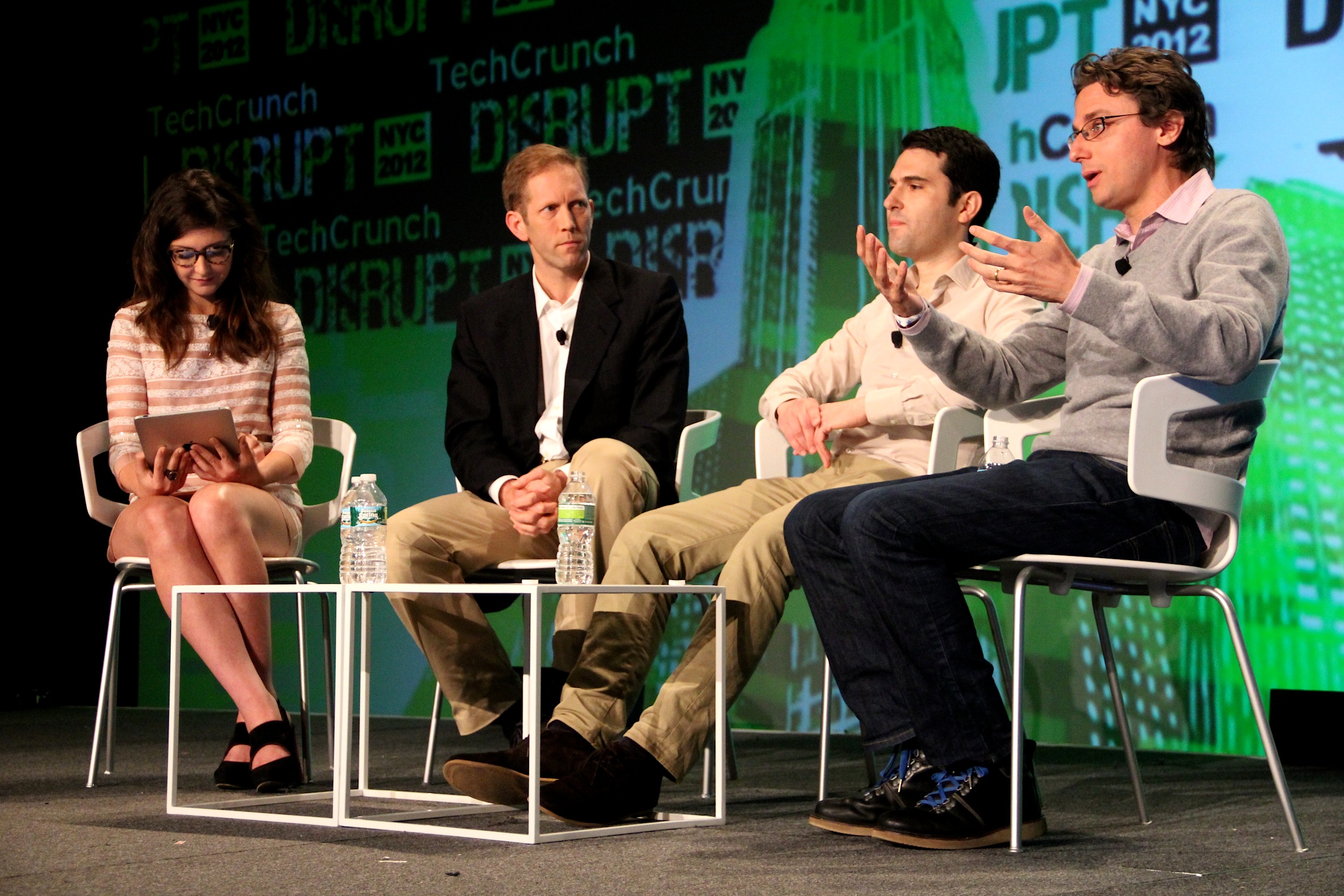If you are so inclined, it’s pretty easy to criticize Business Insider — the all caps headlines, the slideshows, and content that has been “aggregated” from other sites. (And yes, BI has some mean things to say about us too.) But in the course of of the Disrupt panel on new media, BI CEO and editor in chief Henry Blodget offered several unapologetic explanations of why he and his writers do what they do.
One idea that Blodget returned to a couple of times during the panel was that of “native storytelling forms.” In other words, he said that whenever a new medium emerges, traditional media companies are always treating it as extension of what they’re already doing, leading to a lot of “square pegs and round holes.” BI, on the other hand, is trying to explore and build a business around a “new form of storytelling.”
Are phrases like “native storytelling form” just a fancy way for Blodget to say “slideshow”? To a certain extent, yes. For example, when moderator Alexia Tsotsis asked why Blodget published his profile of Mark Zuckerberg in New York magazine rather than his own site, Blodget said that he could have run it on BI, “but frankly, that’s not ideal for this medium.” As a counterexample of what does work online, Blodget pointed to a slideshow of the Canadian oil sand mines, which he said showed the “unbelievable power of photo essays.”
At the end of the panel, Blodget addressed the criticism even more directly, when he thought Alexia was taking veiled potshots slideshows (something she denied, especially since she produced slideshows in her old job as SF Weekly web editor). He said slideshows are exactly the kind of “native storytelling” that he was referring to — something you couldn’t do in TV or in print. He pointed out that BI slideshows also have a “view as one page” option, so they don’t force people to click through each slide if they don’t want to.
Blodget also discussed the idea that Business Insider publishes sensationalist “linkbait” headlines.
“You know what the definition of ‘linkbait’ is?” he said. “It’s a story that people want to link to and share.”
So Blodget has no problem publishing sad puppy photos next to Facebook IPO stories, because that’s what people want to see. He said that’s distinct from “clickbait” headlines, which may promise one thing while the story delivers something else.
He became most excited when he moved to the topic of news aggregation. BI has been accused of aggregating stories from other sites without proper attribution, but Blodget said, “Please, please aggregate from Business Insider all day long. We will only thank you.” After all, he said this kind of citation is “what magazines used to have to employ PR people to do.”
To be clear, there were other speakers on the panel — I’ve focused on Blodget since he spoke the most and was the most provocative. There were other approaches discussed on-stage. For example, as a counterpoint to all the discussion of traffic from social networks, Techmeme founder Gabe Rivera said a lot of his content doesn’t do well on social media. After all, he’s trying to reach the movers and shakers in tech who want their “news vegetables” along with “news desserts.”
“A lot of stuff that you read on Techmeme and are happy for having read is stuff that you know wouldn’t make your Facebook feed fun,” Rivera said. (Though he was quick to add that Techmeme has fun stuff too.)
There was lots more in the panel, but here’s the real conclusion, to quote my colleague Ingrid Lunden: “We need more puppies on the homepage of TechCrunch.” Ingrid, ask and ye shall receive.

